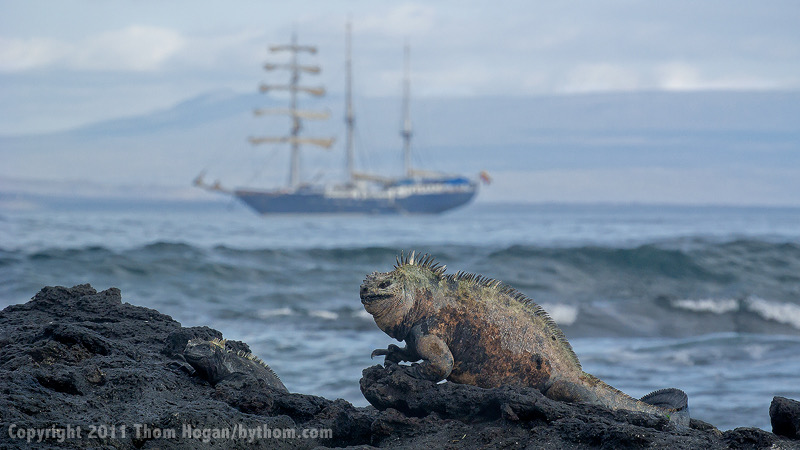
The Galapagos Islands are a freak of nature. They are so far off South America (500+ miles) that they are isolated ecologically (except for man's influence). Yet they reside at a confluence of warm and cold waters that makes for a rich underwater ecosystem, which in turn serves as the engine that drives the above-water ecosystem.
Because of the isolation, most of the animals that did make it to the islands have no natural predators. The islands themselves are pretty well scattered, so even between islands there is little species interaction.
Despite man's best attempts to introduce predation, guidelines enforced at the Galapagos Islands National Park have kept most of the visitation sites free of outside influence. Thus, the island natives are enormously tolerant of tourists walking around and don't spook easily, as do most wild animals. Only a few places are left where a photographer can take pictures of wild birds with a 14mm lens; the Galapagos is one of them.
The stark vegetation on the islands (they're on the equator, but rarely get rain except in El Nino years) is probably one of the reasons for the strange mix of animals you'll find there. Basically, there are two categories: those that feed directly or indirectly off the rich ocean life (e.g., birds, turtles, penguins, and seals), or hardy animals that can withstand long stretches of drought or food shortages (e.g., tortoises, iguanas, and other reptiles).
Here's a fuller list of the endemic species (number of species is in parentheses; many subspecies exist, as well):
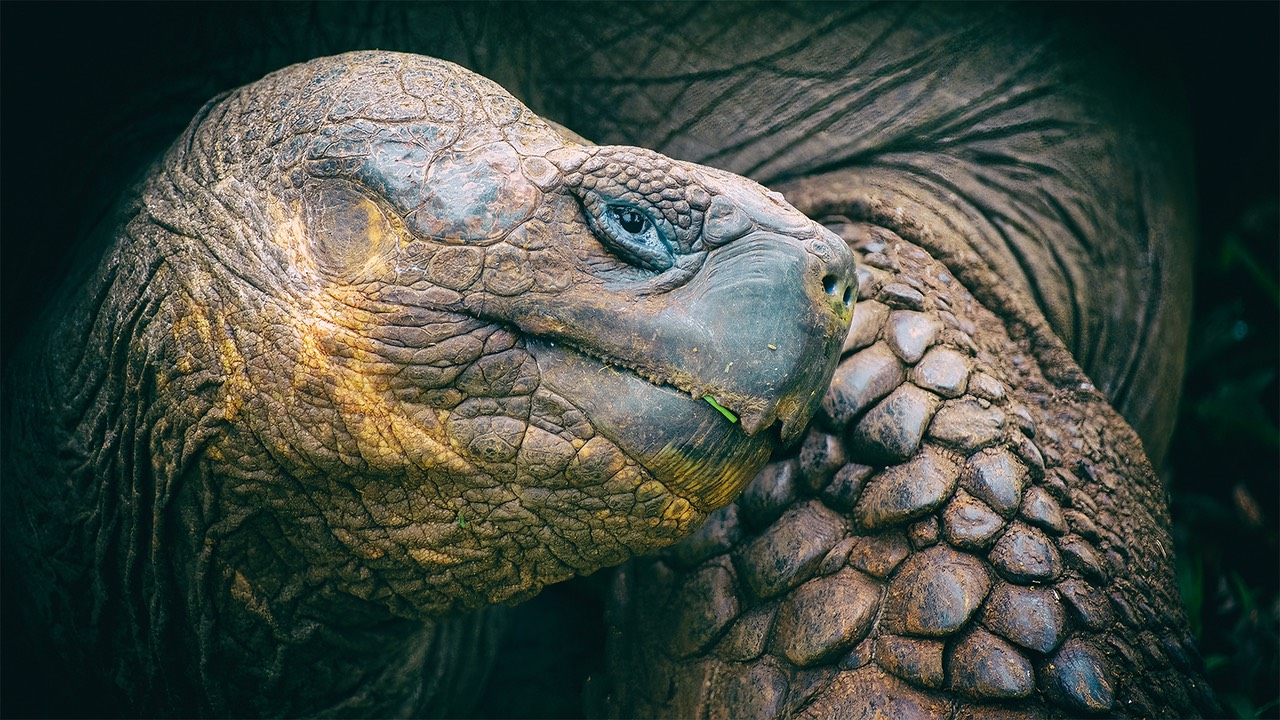
Reptiles
Most of what you've heard is probably about the reptiles, particularly the Giant Tortoise. Surprisingly, there aren't a lot of reptile species on the island, though:
- Geckos (6)
- Snakes (2)
- Lava Lizard (7)
- Land Iguana (2)
- Marine Iguana
- Marine Turtles (4)
- Giant Tortoise
Not every island has land iguanas and giant tortoises. Both Puerto Ayora and Puerto Moreno have research stations with giant tortoises and land iguanas, and you’ll almost certainly be visiting one of those.
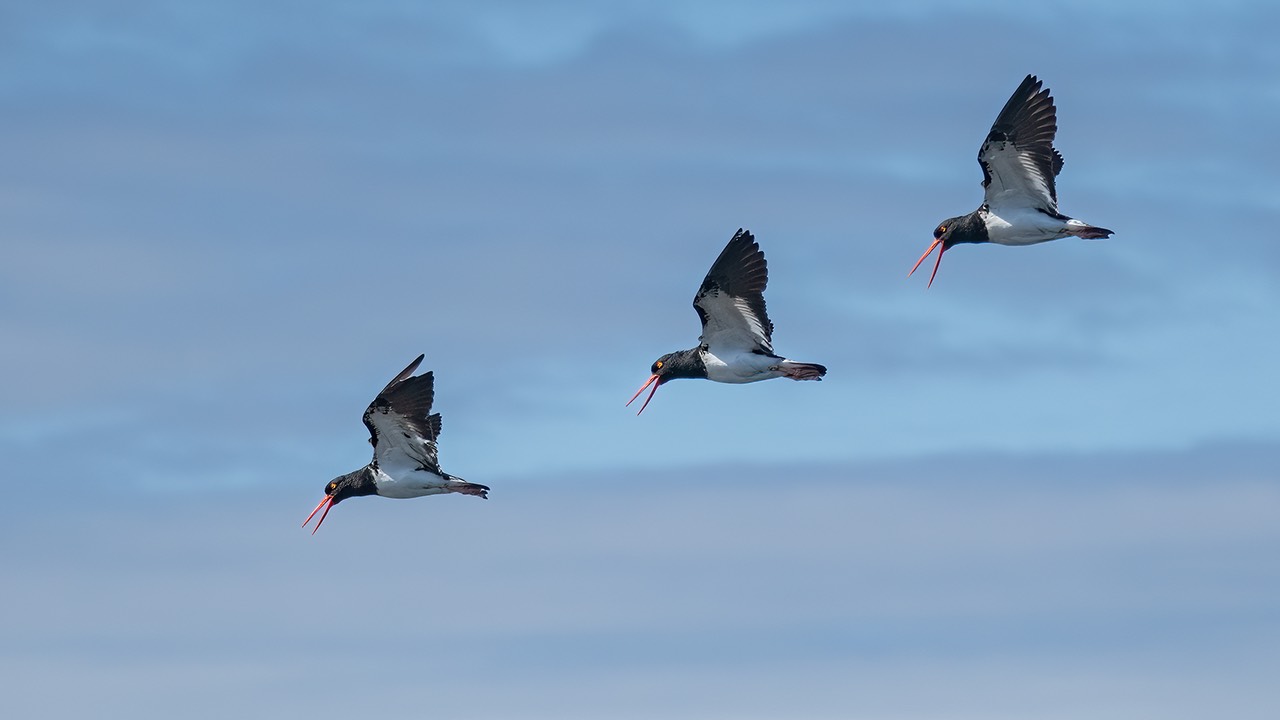
Birds
The Galapagos are a birder's paradise. Both common and uncommon birds are in abundance here, and it's a place that will keep any birder happy and with binoculars to face most of the time.
- Penguin
- Flightless Cormorant
- Lava Gull
- Swallowtail Gull
- Waved Albatross
- Audubon's Shearwater
- Hawaiian Petrel
- Storm Petrels (3)
- Frigatebird (2)
- Tropicbird
- Brown Pelican
- Boobies (3)
- Heron (3)
- Egret (2)
- Oystercatcher
- Flamingo
- Common Stilt
- Bahama Pintail
- Whimbrel
- Wandering Tattler
- Semipalmated Plover
- Sanderling
- Ruddy Turnstone
- Northern Phalarope
- Gallinule (2)
- Hawks
- Flycatchers (2)
- Mockingbirds (4)
- Finches (13)
- Galapagos Dove
- Yellow Warbler
- Galapagos Martin
- Dark-Billed Cuckoo
- Smooth-Billed Ani
- Rail (2)
- Owl (2)
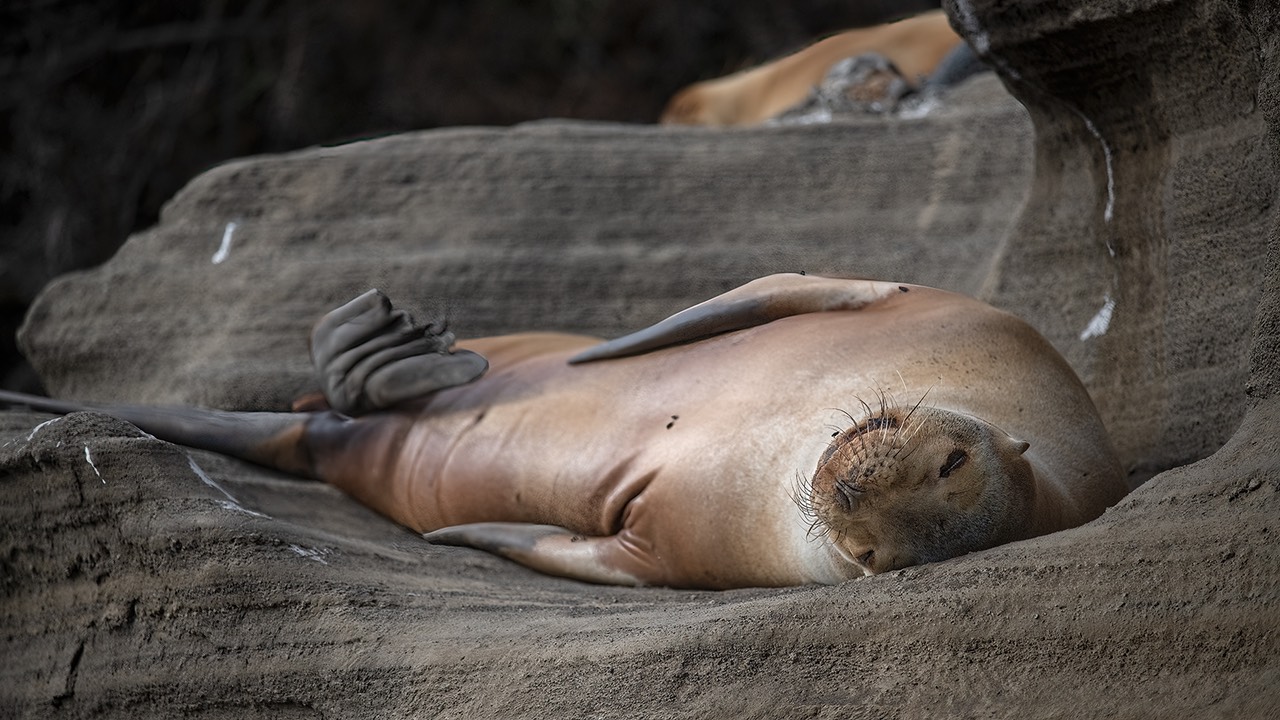
Mammals
- Bats (2)
- Sea Lion (3)
Yes, that's correct: almost no mammals. The conjecture is that animals only got to the islands via flying, swimming, or riding small rafts of downed forest material. Most mammals can't fly, don't swim that far, and would drop through the forest materials rafts.
Note that the fur seal is actually these days regarded as a sea lion.
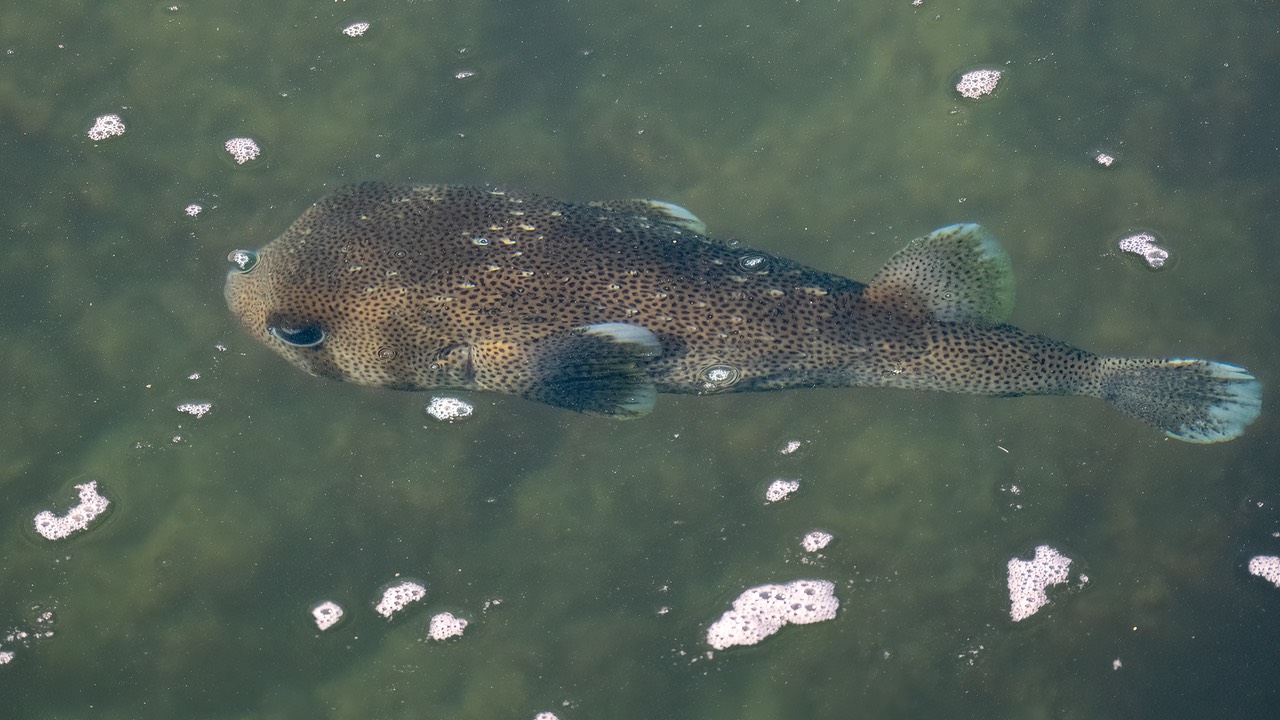
Fish
Snorkeling and diving in the Galapagos reveals a whole other world:
- Fish (306)
- Whales (16)
- Dolphins (7)
- Eels (26)
- Rays (7)
- Sharks (13)
In the shark species, the one that stands out is the hammerhead. It’s fairly common to see this unusual shark in the Galapagos, and often in multiples (schools).
Whales, as everywhere in the world, are seasonal. In the Galapagos they’re mostly transitory (on their way to somewhere else), so they’re rare to see at certain times of the year.
Dolphins love the boats and like to get in the bow waves for short periods, so if the Captain calls over the speakers that there are dolphins, grab your camera and head to the bow.
Note: I've intentionally left off several man-introduced species, such as feral goats and feral cats, as it is the policy of the National Park to eradicate these animals when encountered (harder than you might think). It's actually easy to detect which sites still have unnatural, feral predators—the land iguanas and shore birds are highly skittish and won't hang around for their photo op.
Not all the listed species are endemic to the Galapagos, but a surprising number of them are. Obviously, the Galapagos Islands are a birder's paradise, but they're also a World Class diving destination, as well. You may also have noticed how unbalanced the species breakdown is. Where are the mammals (especially large ones)? Why the unusual number of finches relative to other land birds, like the hawk family predators? Congratulations, you're asking some of the same questions Charles Darwin did when he visited.
It's surprisingly easy to get full-frame pictures of perhaps 90% or more of the Galapagos natives. The ones I've found toughest to find and photograph are the Galapagos Snake, the owls, and the bats. That's partly due to landing itineraries, partly due to the times you're onshore (owls and bats are mostly nocturnal), and partly due to bad luck.